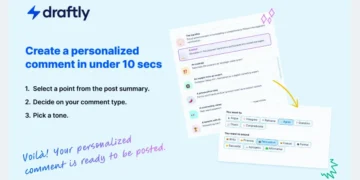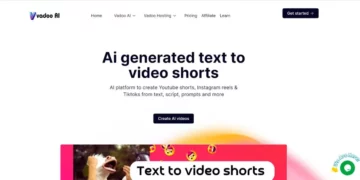The metaverse and associated immersive technologies like virtual reality (VR) and augmented reality (AR) are opening new frontiers in education. Early adopters demonstrate enormous potential to increase student engagement, improve learning outcomes, and expand access to high-quality instruction.
As metaverse platforms evolve, they aim to transform how students of all ages are taught in the decades ahead.
The Metaverse Creates Immersive Learning Experiences
The metaverse refers to shared virtual 3D environments where users interact through digital avatars. Educational metaverses incorporate immersive technologies like VR headsets to create lifelike simulated settings for teaching and learning.
Students are transported into digital worlds relevant to their studies, from virtual chemistry labs to recreations of historic monuments. These simulated environments provide safe spaces to practice skills through experiential learning.
According to one PwC study, 40% of students using VR technology feel more confident about applying what they’ve learned in the real world. The immersive qualities lead to greater engagement and information retention.
Early Adopters Demonstrate Metaverse Learning Success
Though still early, data from schools exploring metaverse-based learning reveals tremendous promise.
A Stanford study found MBA students training soft skills like empathy and listening in VR demonstrated 143% more confidence in those skills versus standard training.
An Arizona State University metaverse language class resulted in 20% greater vocabulary gains and 10% higher exam scores than conventional instruction.
And a study tracking VR use for STEM education in K-12 classrooms found an 11% improvement in learning outcomes among students using VR lessons.
These studies provide convincing evidence of metaverse learning’s advantages.
Metaverse Education Initiatives Around the Globe
Pilot programs exploring immersive education are launching worldwide, demonstrating the metaverse’s universal appeal.
United States
- 15 leading U.S. universities recently formed an alliance to develop XR curriculum, signaling growing mainstream acceptance.
- Stanford’s business school uses VR to teach soft skills like confidence, empathy, and listening.
- Arizona State enables language students to practice conversational skills by interacting with native speakers in VR.
Europe
- The University of Cambridge offers a free VR experience for engineering students to operate virtual lab equipment.
- University College London created a VR field trip of London’s geology for earth sciences students.
- Italy’s government is funding VR integration into schools after pilots showed 82% learning improvement.
United Kingdom
- Imperial College London scientists built a VR model of the human body for medical students to practice surgery.
- England’s Department of Education added VR curriculum requirements after finding it boosts motivation and career interest in STEM subjects.
Metaverse Classrooms – The Next Evolution of Online Learning
Virtual learning exploded during the pandemic out of necessity. But it lacked the engagement and socialization of in-person education. Metaverse-enabled classrooms solve these issues.
Rather than passively watching lectures on a 2D screen, students are together in a 3D simulated classroom. They can interact naturally with teachers and peers using expressions and body language.
The metaverse enables collaboration through virtual group projects and discussions. Remote students no longer feel disconnected and isolated.
These immersive social experiences support emotional development and soft skills building – benefits lost with traditional online learning.
Challenges and Concerns Hindering Metaverse Adoption
While optimism for immersive learning is high, meaningful integration of these technologies into education presents challenges:
- Hardware Costs – VR headsets remain expensive for mass adoption. Declining prices will help schools overcome budget limitations.
- Digital Divide – Underprivileged students may lack access to required hardware and broadband internet. Governments must address this divide.
- Teacher Training – Educators need training to effectively implement metaverse curriculums and tools. Intuitive designs will also ease adoption.
- Health Concerns – Motion sickness and effects of prolonged headset use require further research to establish proper safety guidelines.
- Behavior Management – Teachers may struggle to monitor student conduct in virtual environments. Again, training and intuitive systems will help overcome this.
With careful strategy and continued technological progress, these hurdles can be cleared to unlock the metaverse’s monumental potential for learning.
Imagining the Future of Metaverse Education
Near term, expect growing metaverse integration for vocational training, field trips, and subjects benefiting from visualization like sciences, medicine, and architecture. APIs will allow easy content portability between platforms.
Long term, the metaverse may evolve into a decentralized network of interconnected virtual learning worlds. Students could customize avatars and seamlessly travel between immersive courses and campuses. AI assistants could provide personalized tutoring.
Parents may track learning progress through virtual observations. And certifications and credits could be collected across decentralized metaverse networks.
Conclusion
Despite early challenges, the educational applications of metaverse technologies are incredibly compelling – from increasing engagement to making learning fun and interactive.
Powered by trends like consumer VR adoption, cloud computing, and falling hardware costs, metaverse classrooms are poised for mainstream integration over the next decade.
The COVID-19 pandemic proved online education is here to stay. Metaverse platforms represent the natural next step in digitizing learning – moving from 2D to 3D, isolated to social, passive to experiential.
As virtual worlds evolve, the possibilities for reshaping education are limitless. Metaverse academics could even help humanity collaborate to solve pressing real world problems through enhanced global connection.
FAQs
How can VR and AR improve learning outcomes?
Immersive simulations spark engagement and let students apply knowledge in realistic 3D environments, boosting retention and real-world readiness.
What types of curriculum work best in the metaverse?
Experiential subjects like science, medicine, history, languages, and architecture that benefit from visualization and immersion are early adopters.
Do students socialize in metaverse classrooms?
Yes, metaverse spaces allow natural avatar interaction for collaboration, group work, and relationship building lacking in 2D remote learning.
What challenges are slowing metaverse education adoption?
Hurdles like hardware costs, teacher training, health concerns, and accessibility need addressing but can be overcome with careful strategy.
Could the metaverse eliminate geographic barriers to education?
Potentially – decentralized metaverse networks could provide students everywhere access to top instructors and institutions around the world.
How soon will metaverse learning become mainstream?
Many predict significant integration over the next 5-10 years as supporting technologies improve and costs decrease, allowing broader access.
Will physical schools and classrooms be replaced?
Rather than replacing in-person learning, metaverse will likely first complement and enhance traditional instruction as a hybrid approach.
What does the long-term future look like for metaverse education?
Possibilities include interconnected virtual worlds transformed into a decentralized metaverse learning network accessible from anywhere.
Follow us on our social networks and keep up to date with everything that happens in the Metaverse!
Twitter Linkedin Facebook Telegram Instagram Google News Amazon Store












































